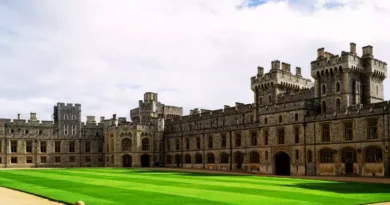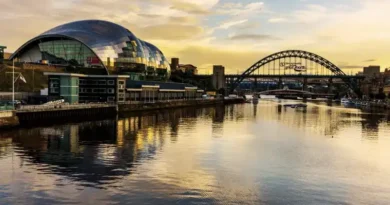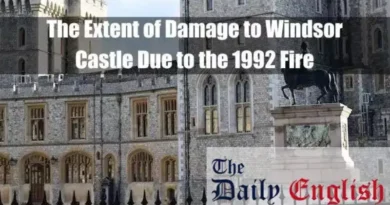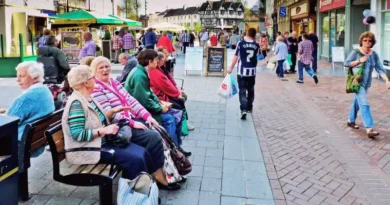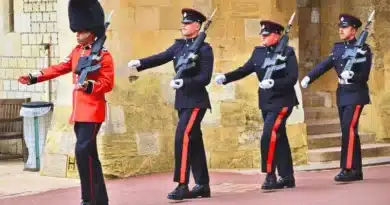How Did the Queen’s Coffin Get to Windsor Castle?
The Queen’s coffin is transported to Windsor Castle in several steps. After the state funeral at Westminster Abbey, the coffin is placed on a State Gun Carriage and processed through central London to Wellington Arch. From there, it is transferred to the State Hearse, which takes it to Windsor. Upon arrival in Windsor, the coffin joins a procession from Shaw Farm Gate along the Long Walk, finally arriving at St. George’s Chapel in Windsor Castle for a Committal Service and private burial.
The transportation of a coffin, particularly for a state funeral like Queen Elizabeth II’s, involves a detailed and well-coordinated process. The route to Windsor Castle is carefully planned, combining tradition with modern logistics to maintain the dignity and solemnity of the occasion.
The coffin’s journey begins after the state funeral service at Westminster Abbey. Following the conclusion of the service, the coffin is moved onto a State Gun Carriage. This carriage, steeped in historical significance, is a traditional means of transporting the coffin of a monarch or high-ranking official in a ceremonial procession. The State Gun Carriage adds a layer of historical continuity, linking the funeral to those of past monarchs.
The procession from Westminster Abbey to Wellington Arch is a significant part of the route. The streets of London are lined with mourners and well-wishers offering their final respects. The route is predetermined and meticulously planned, passing through notable landmarks, including Parliament Square, Whitehall, and The Mall. Each of these locations holds its own significance in British history, and their inclusion in the route underscores the importance of the occasion.
Upon reaching Wellington Arch, the coffin is transferred from the State Gun Carriage to the State Hearse. This transition is carried out with great care, maintaining the solemn atmosphere of the procession. The hearse then begins its journey from central London to Windsor, following a carefully chosen route to manage logistics while respecting the ceremonial aspects of the occasion.
As the hearse approaches Windsor, it joins a new procession that begins at Shaw Farm Gate on Albert Road. This marks the final leg of the journey to Windsor Castle. The route taken by the procession in Windsor is designed to be both meaningful and respectful, reflecting the significance of the destination. The procession moves along the Long Walk, a straight path leading directly to Windsor Castle. This iconic path is lined with thousands of onlookers gathered to pay their respects as the coffin approaches the castle.

The final destination within Windsor Castle is St. George’s Chapel. The chapel, with its rich history and deep connections to the British royal family, is where the Committal Service takes place. This service is typically more private, attended by close family and officials, unlike the public state funeral earlier in the day. The coffin is carried up the chapel’s steps in a final, solemn procession, marking the end of its journey.
This process, from Westminster Abbey to Windsor Castle, is steeped in tradition and carries the weight of centuries of British history. Each journey step is planned with precision, ensuring that the coffin’s passage is respectful and reflective of the occasion’s importance. This careful planning is essential to maintaining the dignity of the event, ensuring that every aspect of the journey is conducted with the utmost respect for the deceased and their legacy.
The journey to Windsor Castle is more than a physical movement from one location to another. It is a symbolic transition, marking the final passage of a monarch from their life of public service to their final resting place. The route is chosen for its practicality and symbolic resonance, connecting the different stages of the monarch’s life and reign with places central to British history.
This meticulous planning and execution of the coffin’s journey to Windsor Castle symbolises the care and respect the British monarchy treats such occasions. Each element of the journey is chosen for its significance, creating a procession that is both meaningful and reflective of the deep traditions of the British state.
In conclusion, transporting the coffin to Windsor Castle is a process rich in symbolism and steeped in tradition. From the State Gun Carriage to the State Hearse, from the bustling streets of London to the serene grounds of Windsor Castle, every step of the journey is carefully planned and executed to ensure that the occasion is conducted with the dignity and respect it deserves. The journey is a logistical challenge and a deeply symbolic act, reflecting the event’s importance and the deceased’s legacy.




